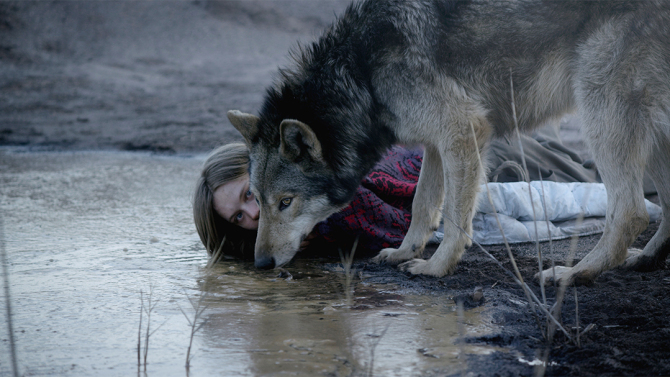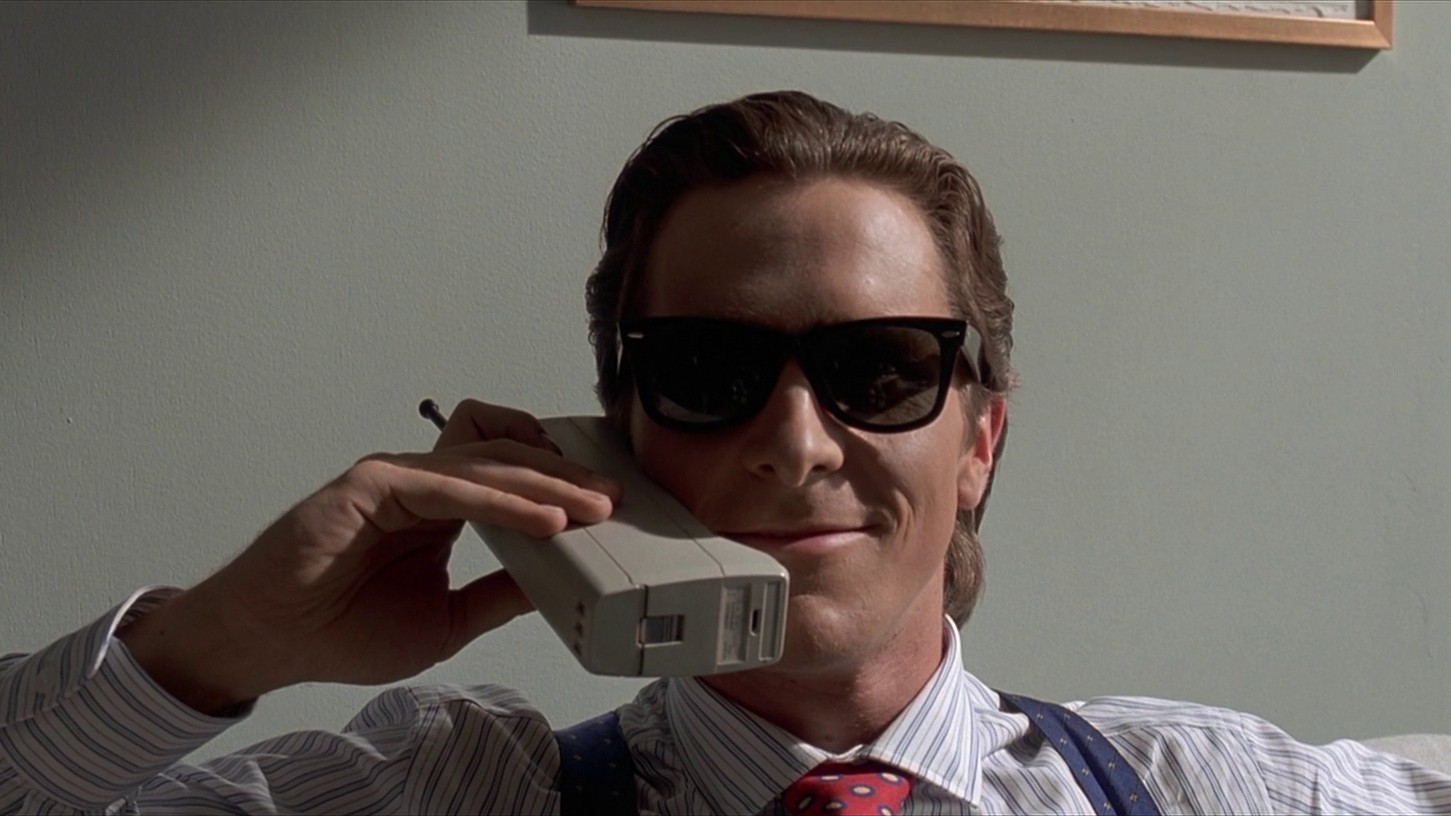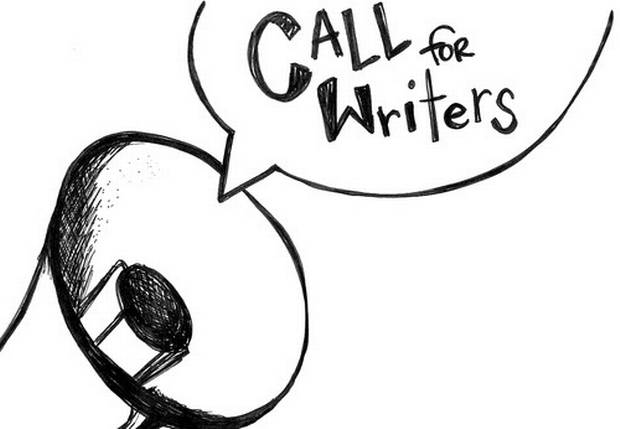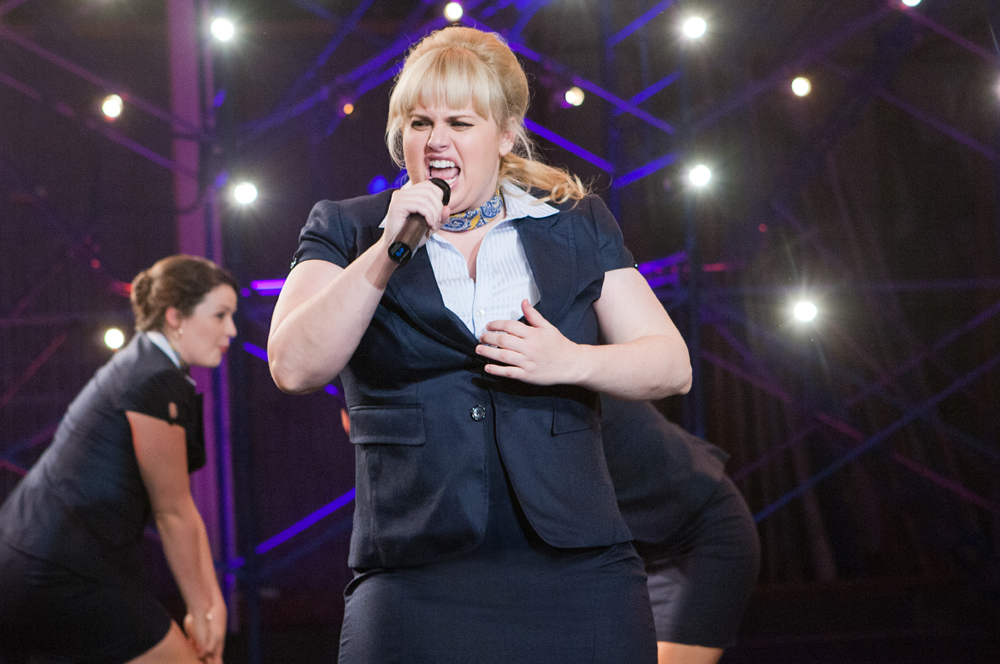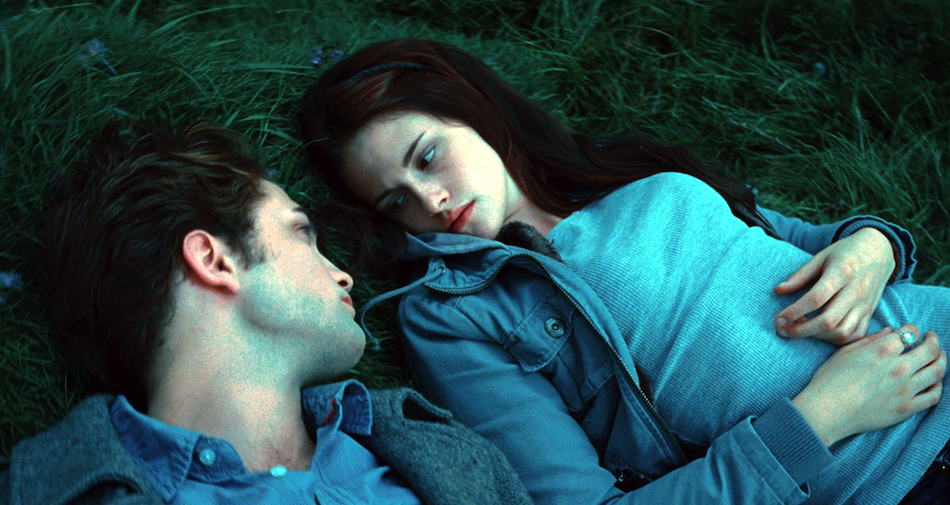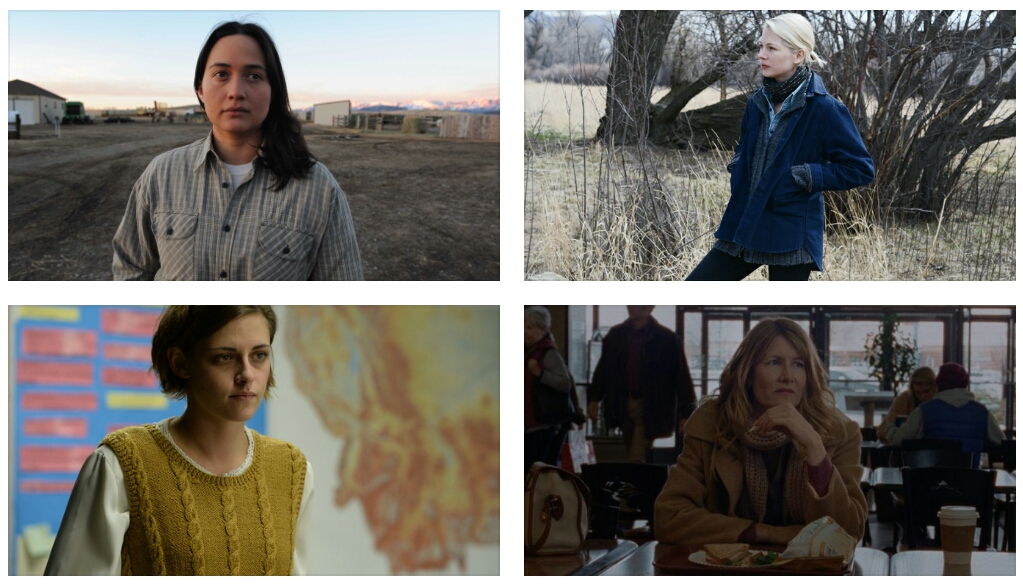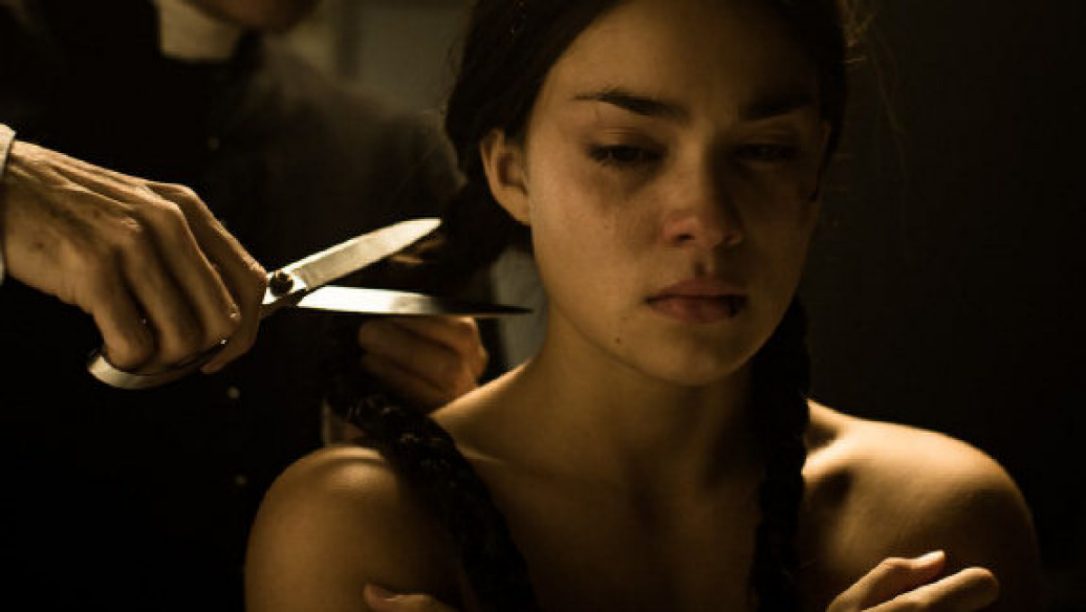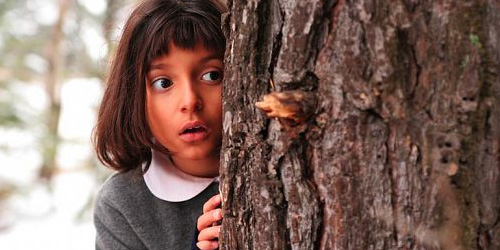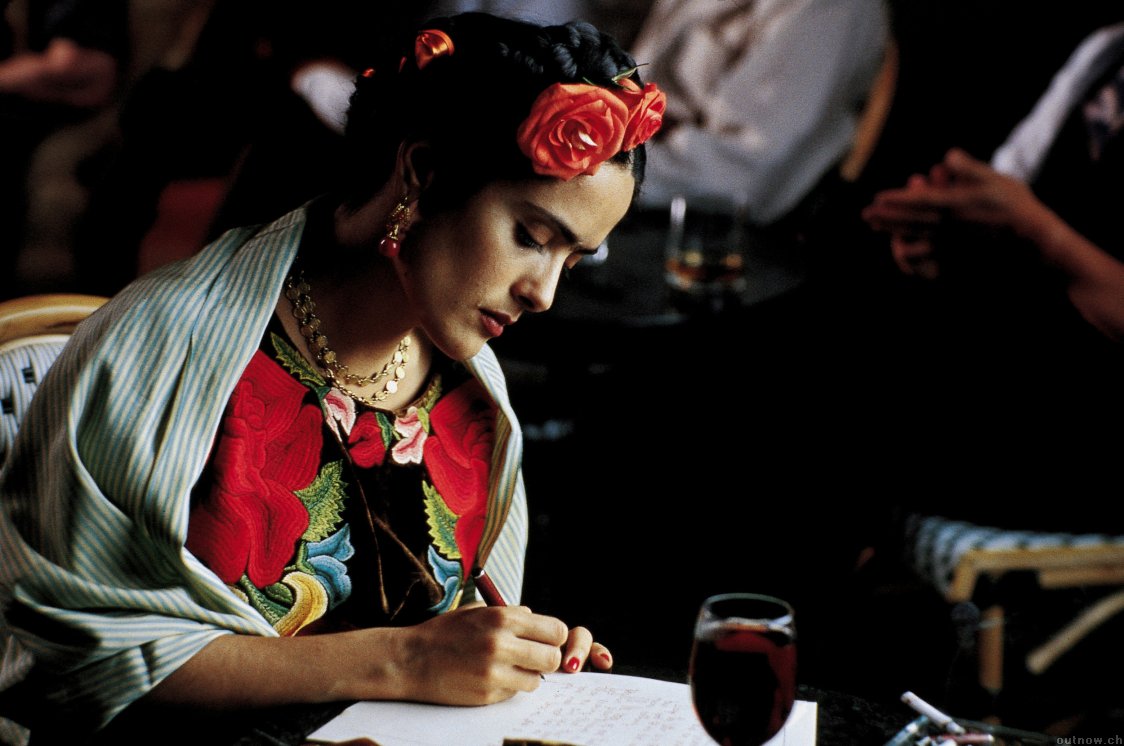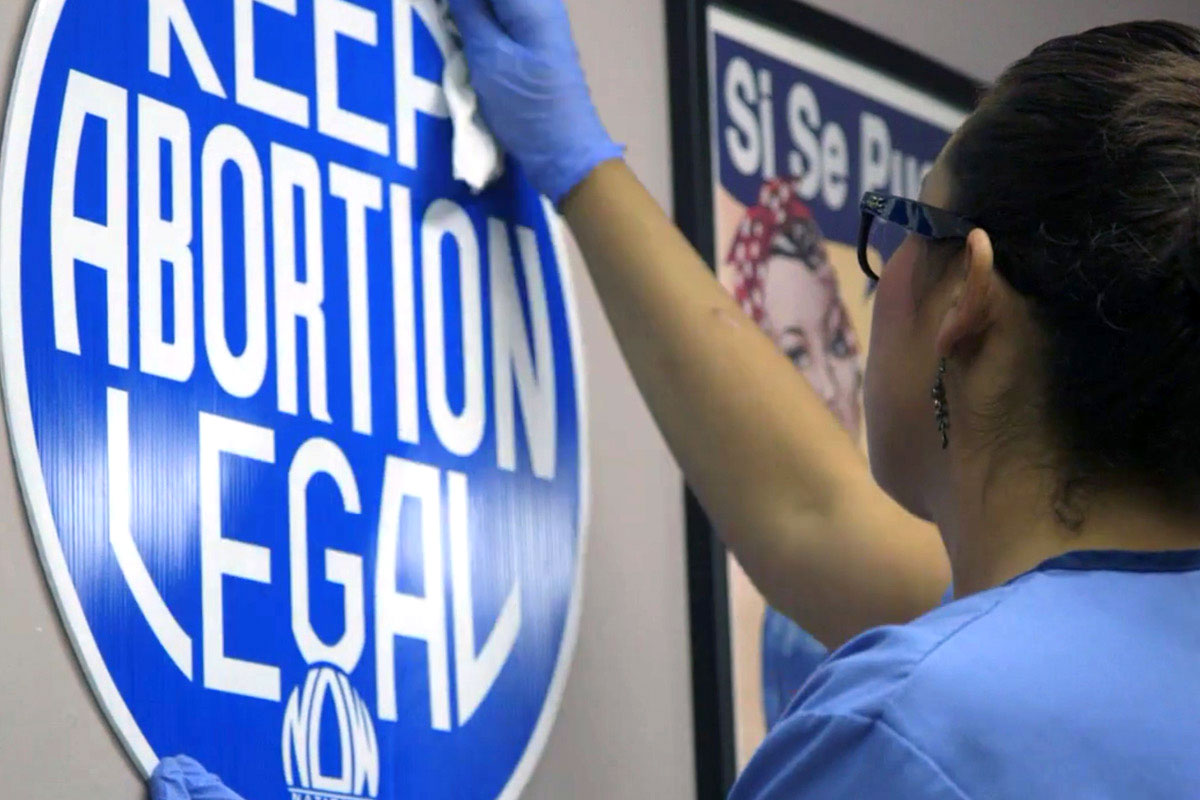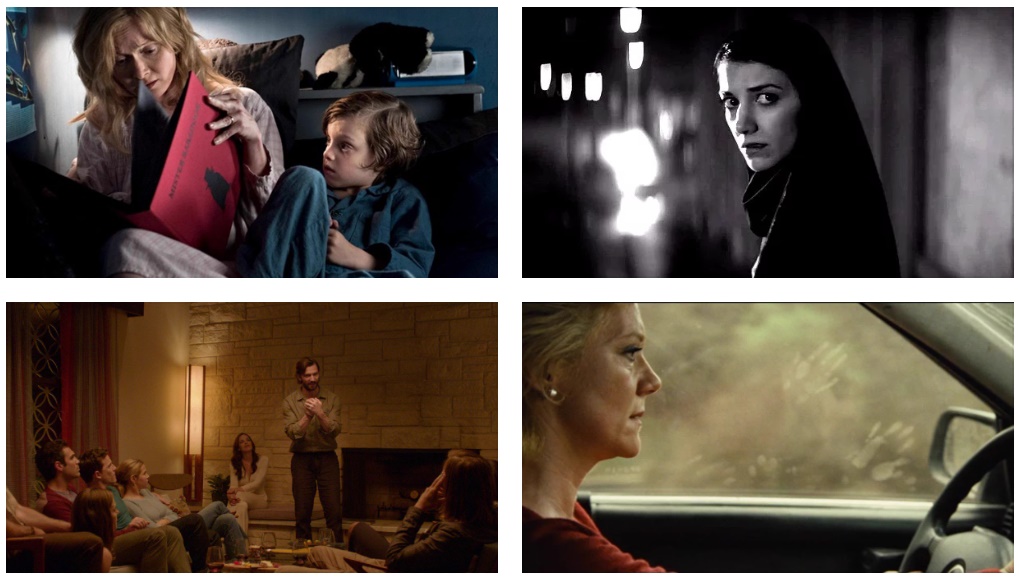This guest post written by Lee Jutton appears as part of our theme week on Women Directors. | Spoilers ahead.
The way filmmaker Nicolette Krebitz tells it, it began with a dream — or rather, a nightmare. Night after night, she dreamed something was following her; what it was, she didn’t know, but it haunted her sleep over and over again. Eventually, someone advised her to try turning around within the dream so she could identity her mysterious stalker. When she did, she was surprised to discover that the creature so intent on tracking her was a wolf.
Shortly afterward, Krebitz heard that wolves were migrating into Germany, nearly a century after they had been hunted to extinction in that country. Prior to this, Krebitz had no particular affinity for wolves, but their return to Germany so soon after her dream seemed fortuitous. So, Krebitz traveled to the east, where wolves were crossing over the German border from Poland, to come face to face with these creatures during her waking hours. Intrigued by this encroachment of nature into civilization, the idea for a film began to formulate in her head.
That film is Wild, a modern-day fable unlike any of the Aesop-influenced tales you heard as a child. It tells the story of a seemingly ordinary woman whose life is forever changed after a chance encounter with a wolf. By turns intense and outlandish, deeply emotional and utterly outrageous, Wild busts taboos left and right to show audiences how true happiness can be achieved if one sets societal expectations aside and embraces one’s true nature. It’s a message of universal value, even as the story that Krebitz tells to get it across veers into the extreme.
When we first meet Ania (Lilith Stangenberg), she is floating aimlessly through life like a ghost, her existence barely even susceptible to those around her. Every day, she pulls her hair into a stringy ponytail, throws on her grubby white puffer coat, and catches a bus from her drab high-rise to the drab office where she works as an IT specialist. She’s a favorite of her boss, Boris (Georg Friedrich) because she never asks questions and brings him coffee when he asks for it; he does this by throwing things against the glass wall that separates his corner office from the cubicles, like an anxiety-ridden zoo animal. Ania’s only interest outside of work — and the only sign that something is stirring beneath her placid surface — is firing guns at the shooting range. She barely speaks, and once her younger sister moves out of the apartment they share, and her beloved grandfather falls into a coma, she doesn’t have much reason to interact with anyone. It’s life, but it’s not really living.
That all changes when, while trudging through the park on her way to work, Ania sees a wolf. The creature’s effect on Ania is immediately palpable; rooted to the spot, her previously impassive face grows wide-eyed, not with fear but with total fascination. Ania might struggle to connect with her fellow humans, but her connection with the wolf is startlingly primal. The moment is brief; the wolf disappears into the woods, and Ania goes to the office, as she would any other day. But the spark lit within her by the wolf’s appearance has begun to smolder, and while at first it only manifests in the form of a few seemingly harmless image searches on the Internet, it quickly grows out of control.
Ania’s obsession with seeing the wolf again spurs her to develop an elaborate scheme to capture it. Conveniently already an excellent shot from her many hours at the shooting range, and with easy access to tranquilizers, thanks to her grandfather’s hospitalization, Ania manages to stun the wolf and sneak it into her apartment. Watching Ania’s slight form struggle to drag the massive animal through the front doors of her building without anyone noticing is one of the more genuinely hilarious moments in a film that has plenty of awkward, cringe-inducing humor as well as many scenes that elicit a few involuntary chuckles out of sheer discomfort.
Once the wolf is sequestered in her sister’s old bedroom, Ania begins to disconnect from the human world. Clad in only a grungy tank top and underpants, her hair free to tumble loosely around her shoulders, Ania spends her days chattering away at the wolf and cooking him meals before collapsing into a heap on the floor to sleep at night. When low on money, she boldly ventures out into the night to scarf down food left behind on cafe tables even as the proprietors urge her to scram. When she manages to drag herself into the office, she merely throws on a giant coat to cover herself; she doesn’t bother with pants or with niceties. Meanwhile, the wolf tears apart her apartment as any trapped wild animal would, filling the small space with debris and a stench so potent that the neighbors begin to notice, even if Ania does not. It’s clear that the situation is untenable. It’s also clear that Ania would follow the wolf to the ends of the earth if required.
Little by little, Ania gives up human habits and grows increasingly feral. Her appetites grow and she doesn’t balk at satisfying them by any means necessary — including a couple moments of shocking sexual intimacy with the wolf. Yet even as the audience squirms with distaste at her actions, one cannot help but notice how alive Ania has become. One simultaneously disapproves of her choices and admires how little she cares about approval anyways. In this way, Ania becomes startlingly relatable. It’s human nature to have instincts and urges that we feel obligated to suppress in order to present a polite, respectable face to the rest of society. While some of this repression may be for the best — think about those times you may have wanted to lash out at a rude boss, or snatch something delicious off of another person’s plate in a restaurant — one cannot deny how much happier we all would be if we cared just a little bit less about other people’s opinions and expectations of us. Wild might use the extreme example of bestiality to drive that point home, but the film is clearly about so much more than breaking that particular taboo. It’s about the importance of living without fear.
Wild belongs to Stangenberg, a striking actress who somehow manages to simultaneously look like the girl next door and unlike any other girl you’ve ever seen. Her performance is the definition of fearless acting, both physically and emotionally; she takes a character that could easily veer into grotesque and makes her absolutely magnetic. When Boris, shocked at the sudden changes in Ania and desperate to regain the easily manipulated employee of the past, reminds her that things can still go back to the way they were before, she retorts, “I don’t want to go back to the way things were before.” The meek, mousy girl meeting her boss’ every demand is gone, replaced with a woman who is finally succumbs to her own needs and wants. Never is this more apparent than when Ania, after having sex with Boris on his desk, demands more satisfaction immediately after he finishes. Seeing that Boris is helpless to help her, she shrugs and decides to pleasure herself in front of him, without another thought about it. Once dominated by Boris and his demands, Ania is now beholden to no one but herself.
It’s easy to read feminist empowerment in Ania’s story, even if Krebitz denied that was her intent during the Q&A that followed the screening of Wild I attended at Kino!2017, the annual German film festival in New York. Indeed, when discussing Stangenberg’s revelatory performance, Krebitz noted that one of her favorite things about her leading lady was that she was a very “modern” actress in terms of her appearance, which is not very stereotypically feminine. This almost genderless quality, which grows more prominent throughout the film as Ania becomes more feral, was important to Krebitz, as the message of Wild is applicable to anyone, anywhere. Yet whether Krebitz intended to convey a particularly feminist message or not, the fact that her protagonist is a woman does give Wild additional layers that would be absent if Ania were a man — especially as she rebels against her male boss and his manipulation of her. Ania’s reckless behavior is all the more revolutionary when contrasted with all of the times women have been told to be quiet, to sit down, to behave like proper ladies. The film’s message may be universal, but it is all the more potent because its messenger is a woman.
Lee Jutton has directed short films starring a killer toaster, a killer Christmas tree, and a not-killer leopard. She previously reviewed new DVD and theatrical releases as a staff writer for Just Press Play and currently reviews television shows as a staff writer for TV Fanatic. You can follow her on Medium for more film reviews and on Twitter for an excessive amount of opinions on German soccer.
